


Pepino mosaic virus (PepMV) is a single-stranded RNA-virus (Potexvirus genus, Fexiviridae family) that was originally isolated from pepino (Solanum muricatum), a South American melon-like fruit. From the season 1999-2000 the virus started to damage greenhouse tomato crops in Europe. Although the virus only causes major problems in tomato cultivation, other plants of the Solanaceae family (night shade family) such as eggplant, black nightshade, some potato and pepper varieties and some plants belonging to the genera Nicotiana (e.g. tobacco plant), Datura (e.g. thorn apple) and Physalis (e.g. Physalis floridana) can also act as a host.
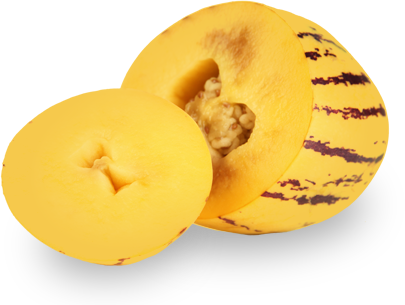
The virus is very infectious and is transmitted mechanically. Possible ways of mechanical transmission are tools, employees, visitors, mobile phones, insects, etc. In other words, all means by which plant sap of an infected plant gets in contact with a non-infected plant. As soon as one single plant in the greenhouse has been infected by the virus, it is impossible to protect the other greenhouse plants from infection because of the rapid spread of the virus. Moreover, the virus spreads heterogeneously, which makes it very difficult to control the crop.
The most typical symptom of a PepMV infection is marbling of the tomato fruit. Brown sepals, bright yellow spots on the leaves and nettle-heads are also characteristic PepMV symptoms. In addition to these typical symptoms, some damage profiles with a physiological cause, such as flamed fruits or open fruits, can also be enhanced by the presence of PepMV.
Because PepMV is a RNA-virus, the replication process in the plant cell proceeds in a less controlled way and mutations occur regularly. The yellowing mutant and the necrotic mutant for example are two atypical forms caused by a mutation in the viral genetic material. Both mutants can cause severe damage to the crop.
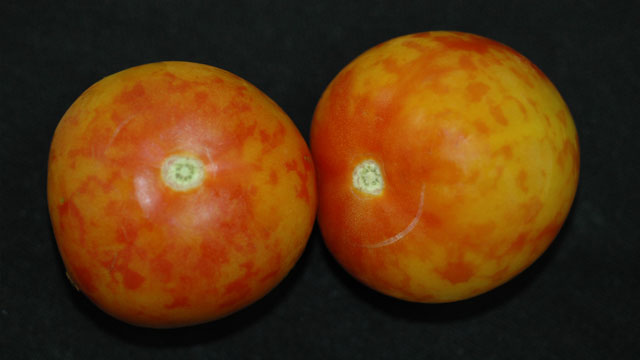
Marbling of the tomato fruit
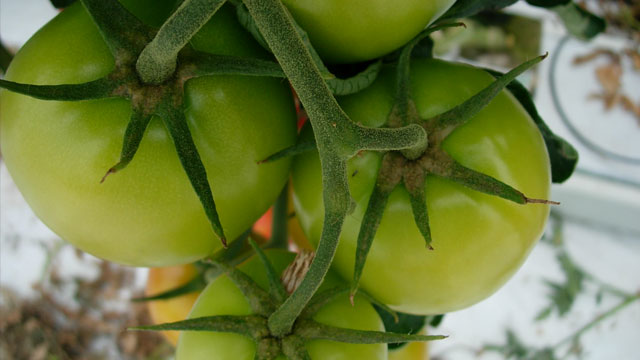
Brown sepals
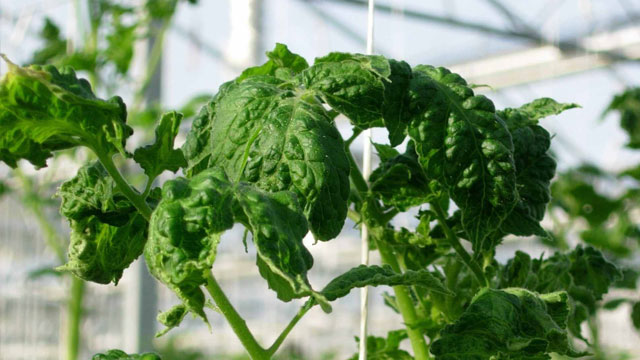
nettle-heads
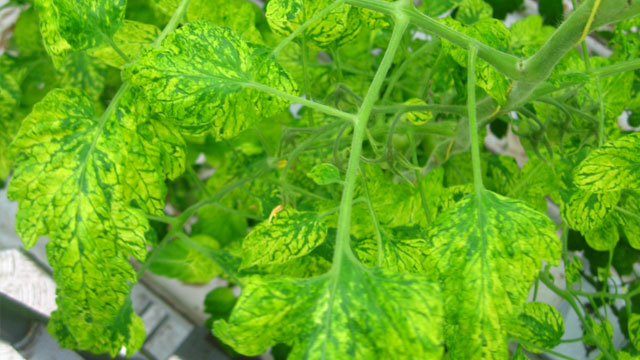
yellowing mutant
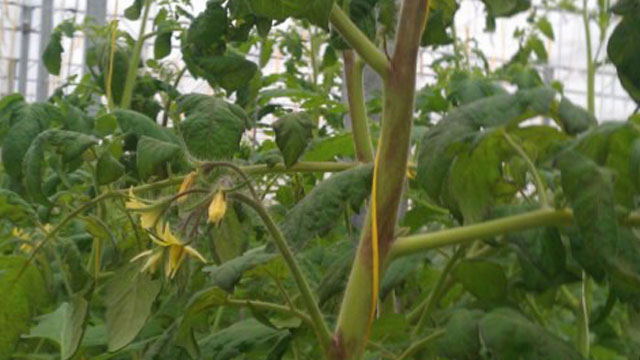
necrotic mutant
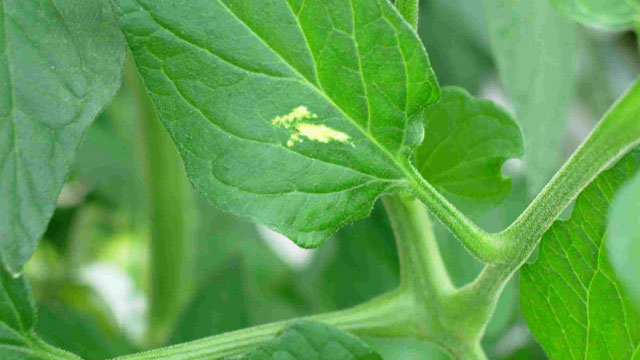
bright yellow spots
Four different strains of the virus are known: the Chilean strain (CH2), the European strain (EU), the Peruvian strain (LP) and the American strain (US1). Within these strains, many different individuals, called isolates, can be observed. In Europe, the Chilean strain (CH2) is dominant and present in 90% of the infections. If more strains are found in case of infection, the infection is usually more aggressive than when only one single strain is present. Within the strains, however, there is also variability among different isolates belonging to the same strain. Although different isolates within one and the same strain are genetically very similar, they can show very different levels of aggressiveness in the plant and, as a consequence, in the severity of the symptoms and the damage they cause. For example, there are very aggressive Chilean isolates, but also very mild ones that cause less symptoms.
The impact of a PepMV infection for the tomato grower is variable. Based on a survey among Belgian growers and on several practical trials with various isolates of PepMV, quality losses were estimated to be between 4 and 15%, with additional production losses between 4 and 12%. Several factors contribute to this variability. The genetic identity of the virus – which isolate of which strain – that causes the infection is one them. The moment in the crop cycle when the infection takes place is another factor that might have an important impact on the damage that is caused. For instance, an infection early in the season, when the plant does not yet bear fruit, will typically cause less losses than when the infection takes place when the plants are heavily laden. Typical of the damage caused by PepMV is, that it is very intense for a few weeks and then disappears to eventually return later in the season. This means that damage can be more severe during a certain period of the year, with 50-60% non-marketable fruits.
Moreover, some tomato varieties are more susceptible to quality losses due to PepMV than others and climate also has an impact. In general, when a plant has more stress for whatever reason, losses will be much greater.
In the early 2000s, PepMV became such a huge problem in Belgium and the Netherlands, that there was an urgent demand for support and control measures from the tomato sector. As a first step, fundamental research was carried out to identify the problem and a very strict hygiene protocol was developed to avoid PepMV infections. These strict hygiene measures turned out to be insufficient to ensure the grower a PepMV-free crop. Soon, research was oriented towards concrete, biological management tools and step by step PMV®-01 vaccination strategy was developed to immunize plants in order to prevent infection.

Copyright © 2024 - Member of Group de Ceuster

Jetzt teilnehmen und 1x monatlich die kostenlosen Garten-Tipps von CUXIN DCM erhalten!
Jetzt anmelden